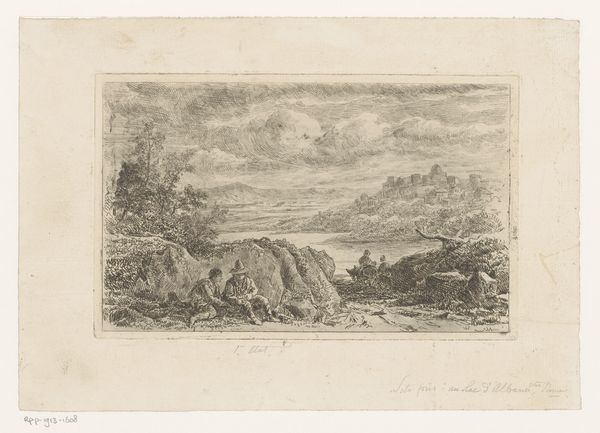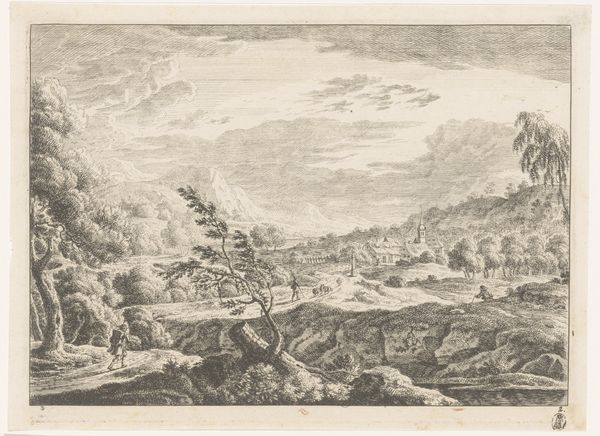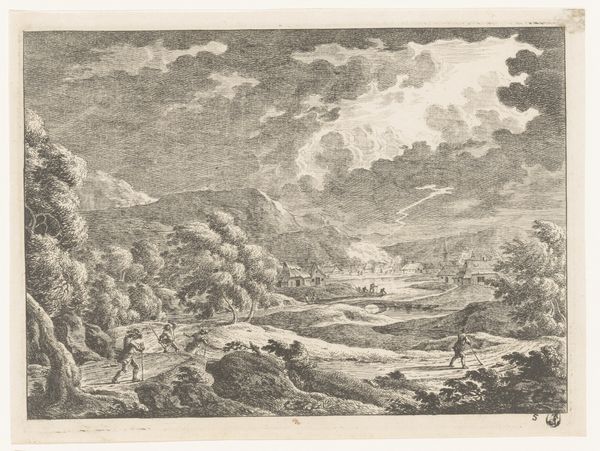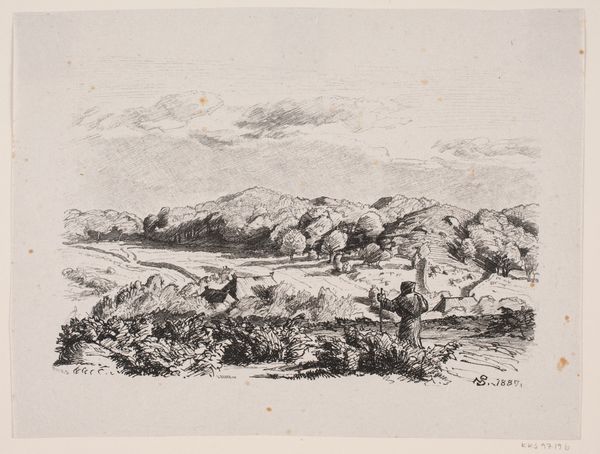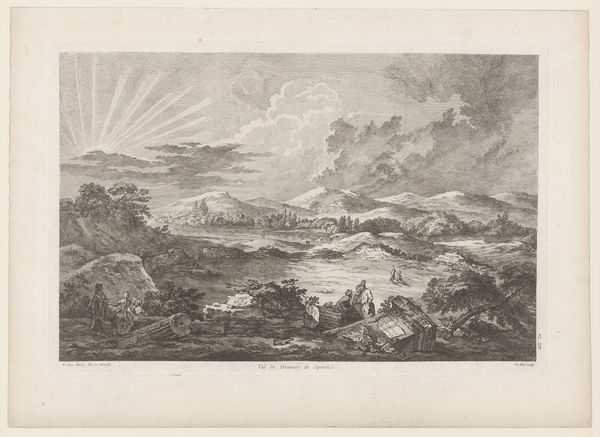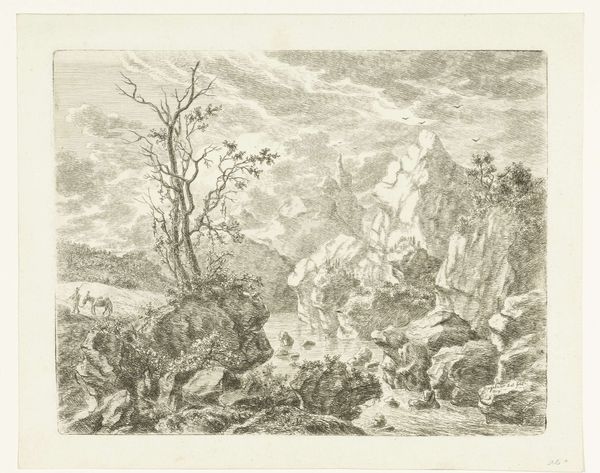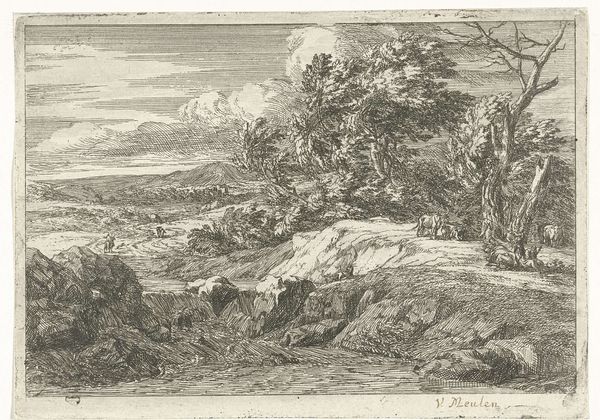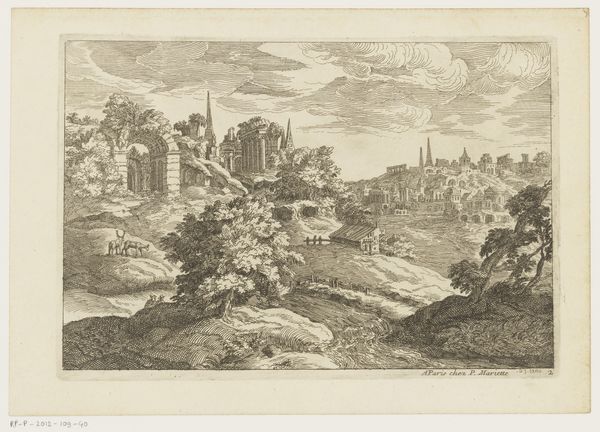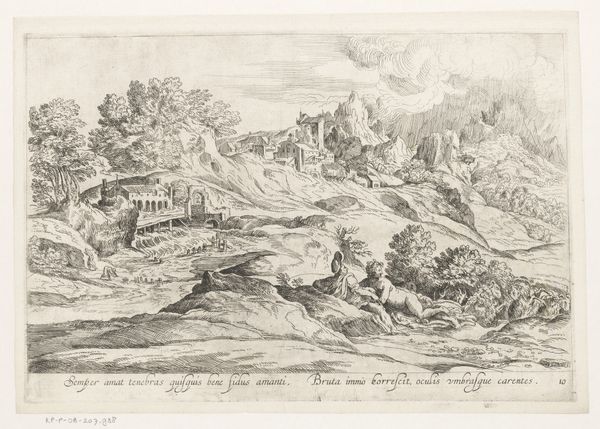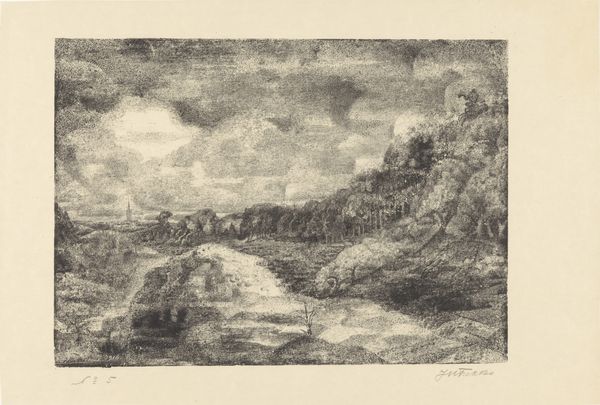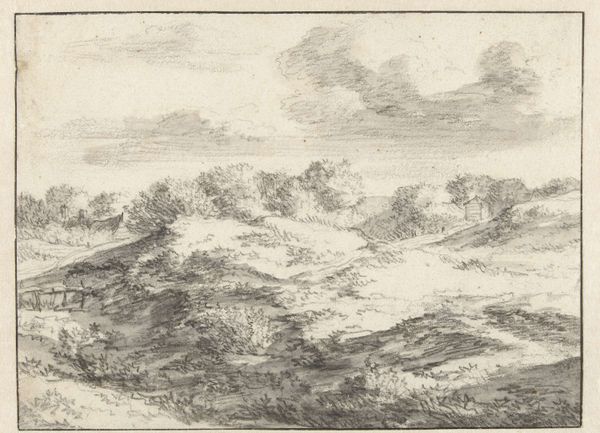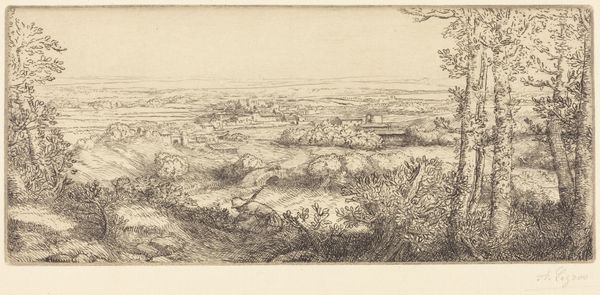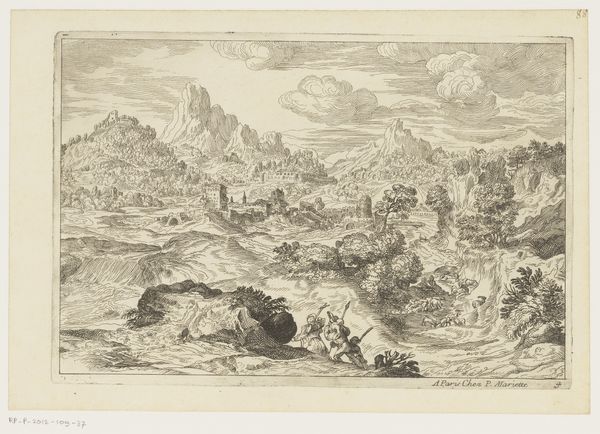
print, etching
#
lake
# print
#
etching
#
landscape
#
cityscape
#
realism
Dimensions: height 137 mm, width 217 mm
Copyright: Rijks Museum: Open Domain
Editor: This etching, "Gezicht op het meer van Albano en Castel Gandolfo" was created between 1817 and 1888 by Joseph Meganck. It’s a wonderfully detailed landscape. What can you tell me about it? Curator: Well, the printmaking process itself is quite telling. Look at the marks - etched lines into a metal plate, likely copper, then submerged in acid to deepen those grooves, the wiping, the pressure...It all points to a deliberate act of reproduction, and thus accessibility. This image of Castel Gandolfo, once potentially only enjoyed by the wealthy on grand tours, is now circulated as a commodity. What does the democratizing of imagery tell us about 19th-century society and art production? Editor: That’s fascinating! So, even the act of creating a print changes who gets to see the artwork and what it represents? Curator: Exactly. The labor involved is also relevant. The artist likely worked in a studio, using specific tools, and possibly even employed assistants. The print then becomes a product of collaborative work, further questioning notions of individual genius. Editor: I see. So, it's not just about the beautiful landscape; it's also about how the image was produced and distributed, and how those processes impact its meaning. Does this accessibility also influence its style of realism? Curator: The realism aligns with the expanding market. Mass-produced prints catered to middle-class audiences who appreciated detailed depictions of real places, mirroring their own desire for material ownership and experience through representation. Editor: I’m going to think differently about prints from now on. Curator: Indeed, examining the material processes unlocks a whole new way of thinking about art history and its role in culture.
Comments
No comments
Be the first to comment and join the conversation on the ultimate creative platform.
